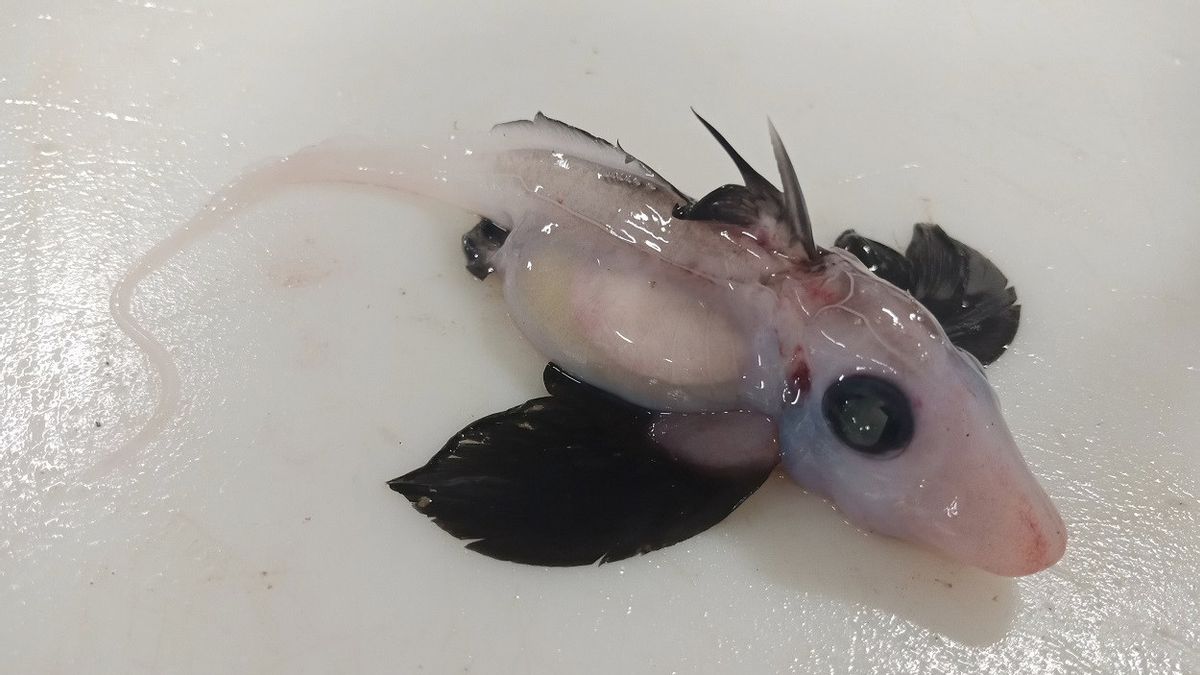JAKARTA - Scientists have discovered a rare newborn ghost shark off the coast of New Zealand's South Island.
But don't let the spooky name fool you, because this bottom reef fish isn't nearly as scary as some of its sharp-toothed relatives.
The baby shark was found at a depth of 1,200 meters by scientists from the National Institute of Water and Atmospheric Research. The newly hatched deep-sea species are actually chimaera meaning, although closely related to sharks and rays, their evolution diverged from them genetically around 400 million years ago.
Also known as mouse fish, spook fish or rabbit fish, because of their large teeth and eyes, this cartilaginous fish can grow to a length of between 60 centimeters and 2 meters.
There are about 50 known species of chimaera worldwide. Most are not well studied because they live at depths of 500 meters or more, making them difficult to observe in their natural habitat.

Spending their lives on the ocean floor, ghost sharks are bottom eaters that eat sea worms, sea urchins, crabs and mollusks. Like their shark cousins, they use electroreception, which helps them sense the electric currents of other organisms, to search for their prey in the dark, as there is virtually no natural light at these depths.
So, how do ghost sharks mate? Similar to their relatives in the shark family, male ghost sharks have retractable sex hooks on their heads. These sex organs are used to hold the female in place during copulation, while two other clasper organs in the pelvic area fertilize her.
The female ghost shark has two wombs, which allows her to lay more than one egg on the ocean floor. The ghost shark embryo develops inside this egg capsule and feeds on the yolk until it is ready to hatch.
"You can tell this ghost shark has just hatched because its belly is full of yolk," said NIWA Fisheries Scientist Dr Brit Finucci, who was part of the team that made the discovery, citing Euronews Feb. 16.
"This is quite surprising. Most deep water ghost sharks are known as adult specimens, neonates are rarely reported so we know very little about them."
Although further tests are needed to determine the exact species of this ghost shark, Dr Finucci believes this rare and exciting discovery will give scientists new insights into the life of the fish that live within these.
"From better studied chimaera species, we know that juveniles and adults can have different dietary and habitat requirements. Juveniles also look different from adults, having distinctive color patterns."
"Finding this ghost shark will help us better understand the biology and ecology of this mysterious group of deep-water fish." he concluded.
The English, Chinese, Japanese, Arabic, and French versions are automatically generated by the AI. So there may still be inaccuracies in translating, please always see Indonesian as our main language. (system supported by DigitalSiber.id)













